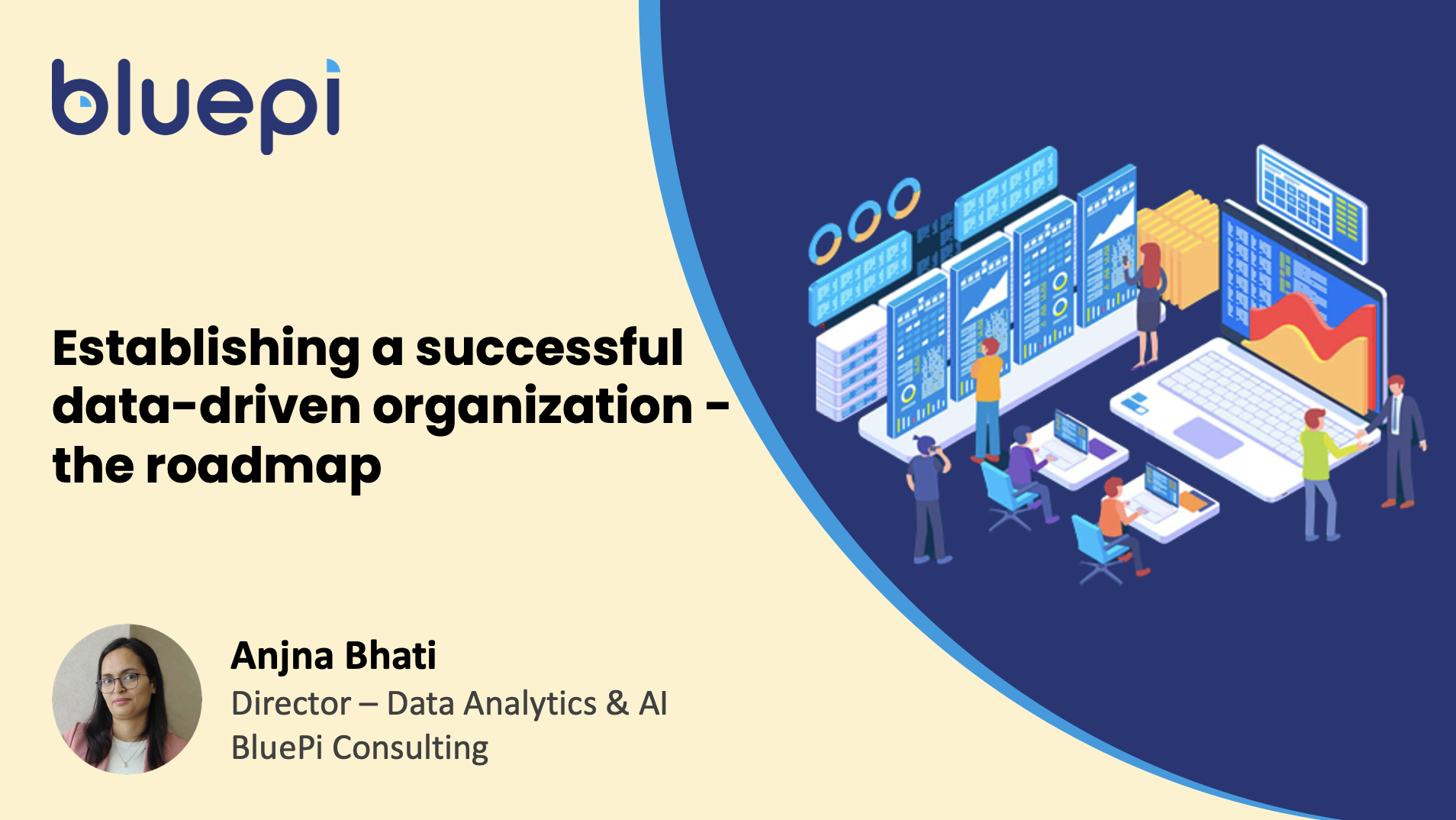Establishing a successful data-driven organization – the roadmap - Ms Anjna Bhati, CTO, BluePi Consulting.

Businesses are investing heavily in data and analytics, but it's unclear
if these investments are paying off.
NewVantage Partners brought out a Special Report – Data and Analytics Leadership Annual Executive Survey 2023, a survey of Fortune 1000 and global data and business leaders, showing that data, analytics, and AI efforts have stalled or backslid. The perspectives of Chief Data Officers, Chief Data and Analytics Officers, and Senior data and business leaders from across financial services, retail, consumer packaged goods, healthcare, and life sciences among others were captured. The key findings were not encouraging at all with only 40.8% of executives saying their companies were competing on data and analytics, a decrease from 47.6% four years ago. 39.5% of executives reported that their companies were managing data as a business asset, a decline from 46.9% four years ago. Only 23.9% of executives reported that their companies have created a data-driven organization, down from 31% four years ago. And just 20.6% of executives reported that a data culture had been established within their companies, a 27% decrease from the 28.3% of companies reporting having established a data culture back in 2019.
Now we should be able to understand how a few successful organizations are succeeding in their data-driven initiatives. Yes, businesses need to invest in these technologies and trace the investments to deliver better outcomes. In this article, we will explore how to become a data-driven organization and succeed. The key steps in creating a data-driven organization are as below:
Develop an effective data strategy
Despite investing heavily in data and analytics initiatives, many businesses have to overcome challenges such as siloed data, practices of ineffective data management, and the absence of meaningful insights to gain the full potential of the available data. The crucial step to take here is to design a clear strategy framework that aligns with the organization’s business goals. This framework should be focused long term and holistically take people, processes, and technology into consideration. The other key elements of the strategy framework should include evaluating data maturity, data governance, and change management to improve decision-making and enable business requirements.
Create a data analytics team of experts
At the outset, businesses should assess the organization’s data maturity level and goal. Based on the gap, organizations can either hire external experts or train internal employees. By recruiting experienced data scientists, engineers, analysts, and the MLOps team and DataOps team the organization can build data analytics capabilities to extract meaningful information from the available data. This team enables organizations to make smart decisions and understand their customers and the market better. Retaining good talent is a challenge, and businesses must offer competitive compensation in addition to providing new opportunities for their career growth and development. Since Data Analytics is an iterative process, these teams should be able to adapt well, while continuously delivering value to the organization.
Establish data-driven culture
In organizations that have a well-established data-driven culture, the leadership team leads by example by making decisions based on data and taking evidence-based actions. This practice compels all employees to do the same if they have to interact with senior leaders in the same language. It is important to incorporate data-driven decision-making in all processes and integrate data insights into both long-term plans and day-to-day operations. During all meetings, discussions around data should be encouraged, and all stakeholders have to be convinced of the benefits of data-driven approaches. This can be achieved by developing a change management program, implementing a strong internal communications strategy, and appointing internal champions to promote a data-driven culture and address challenges that may arise.
Enhance data quality
Data quality can be lost in many ways. Data can become outdated or redundant over time. Downstream data products may become corrupted by schema modifications. Important data can stop flowing into the warehouse because of APIs. Inadequate data quality causes data teams to waste time fixing malfunctioning dashboards and suspect reports. This leads to business leaders going back to making decisions based on intuition and anecdotal evidence as organizational faith in data crashes. By addressing the dimensions of data quality, such as accuracy, completeness, consistency, timeliness, validity, and integrity, organizations can ensure that their data is reliable and can be used effectively to drive business growth and success.
Democratize data
Data democratization is one of the basic steps in establishing a data-driven culture across the organization. With this, more people take data-driven decisions which will make the whole system more efficient. This process of data democratization involves making data more accessible to a maximum number of employees within the organization irrespective of their technical expertise and will lessen the burden on the data team. Data analysts can use their time to perform more advanced work and other strategic projects. The right teams can access the data that is relevant to them for informed decision-making, more initiatives, and innovation leading to better ROI.
Additionally, by partnering with an external data analytics service
provider, businesses will be empowered to reach and convert more prospects with
the right messaging to the right set of audiences. Considering data as a
strategic asset can transform businesses into ones that are data-driven,
propelling them toward success.



